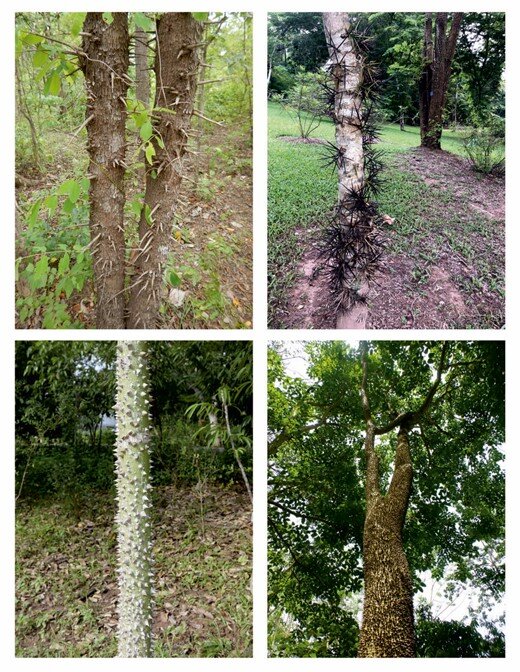Spines on plants are widely distributed across plant families. The defensive role of spines has previously been related to leaves, young shoots and reproductive organs. However, the different syndromes of spiny plants have barely been explored and people do not yet have a complete synthesis of their function based on their morphological attributes.
In a study published in Annals of Botany, researchers from Xishuangbanna Tropical Botanical Garden (XTBG) identified four morphological syndromes of trunk spines. Two corresponded to already known functions (anchorage for lianas and crown defense against large ground mammals), and two strategies are newly described trait syndromes with traits suggesting a defense against bark feeding and climbing mammals.
The researchers analyzed the traits of 31 tropical woody species with spines on their trunk, using the living collections of XTBG, and investigated their potential functions using arguments from simulation and the nutritiousness of defended organs.
The researchers performed virtual experiments to evaluate the potential roles of trunk spines against bark removal and climbing animals of different sizes. They then compared for each species and their confamilial non-spiny species the nutritional profiles of leaf, bark and reproductive organs to test whether trunk spines were associated with a nutritious organ.
They identified two new morphological syndromes that spines likely defend against debarking and climbing animals. They also identified already known functions that spines present as a remnant of a function performed earlier in their ontogeny (anchoring the plant in lianas, or defending the canopy from ground mammals).
“Our results provide an informed guide about trunk spine strategies and the criteria to identify them, their most likely function and the likely feeding mode and size of animal targeted by the defense, which could be used for setting up further experimental work,” said Kyle W Tomlinson of XTBG.
Key words
Contact
Kyle Tomlinson Ph.D Principal Investigator
Center for Integrative Conservation, Xishuangbanna Tropical Botanical Garden, Chinese Academy of Sciences, Menglun, Mengla, Yunnan 666303, China
E-mail: kyle.tomlinson@xtbg.org.cn

Pictures of spiny trunk species illustrating the two spiny syndromes Thorny trunk (top) and prickly trunk (bottom) related to new functions of spinescence. Cratoxylum cochinchinense (top left), Gleditsia microphylla (top right), Ceiba speciosa (bottom left) and Hura crepitans (bottom right). (Image by XTBG)

